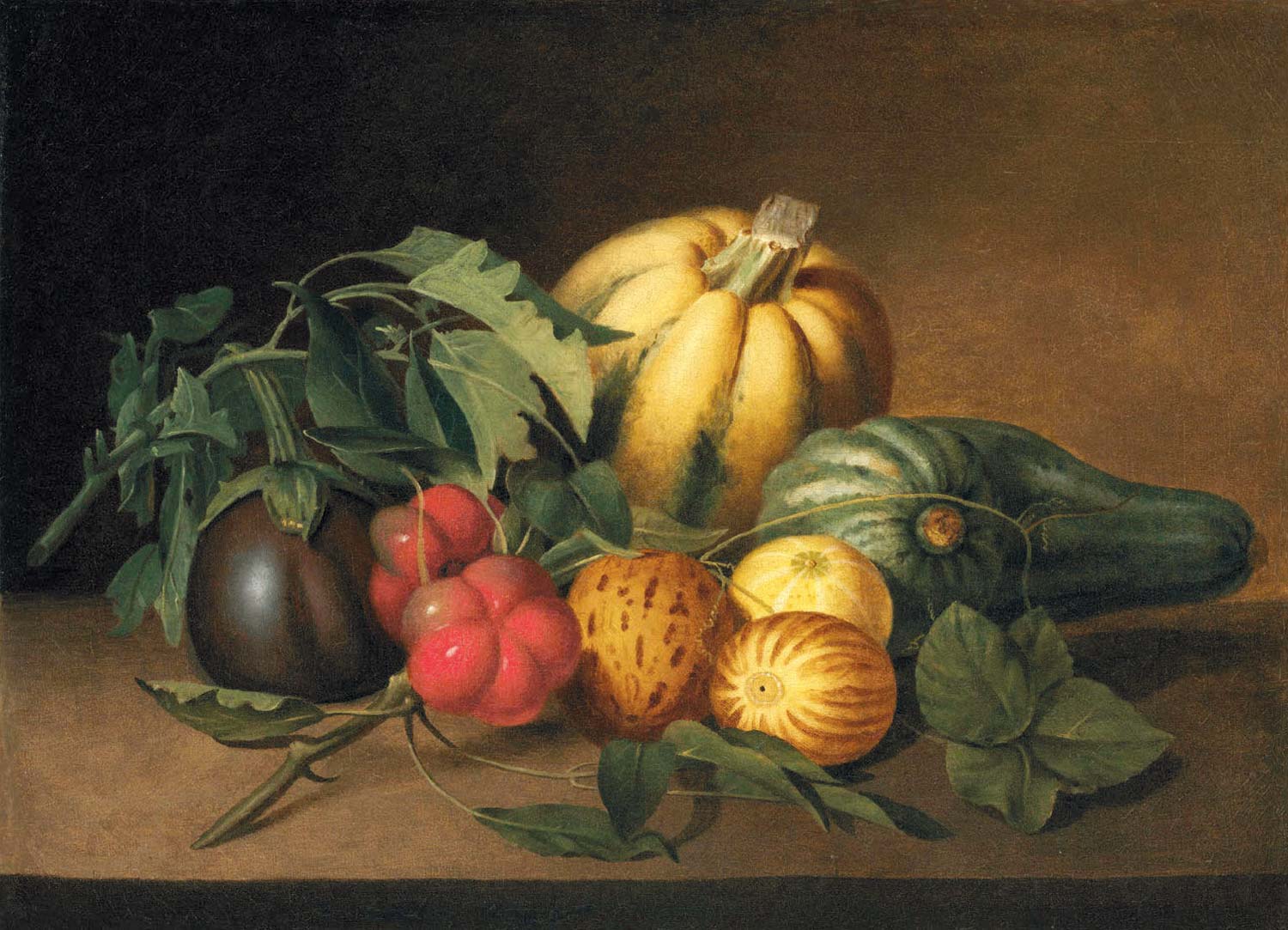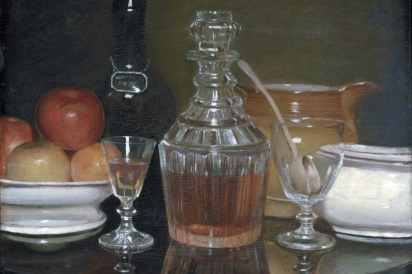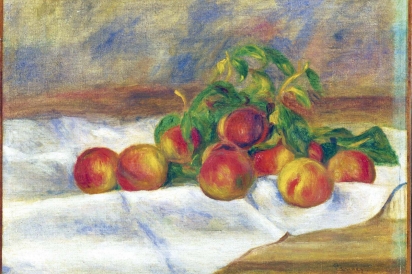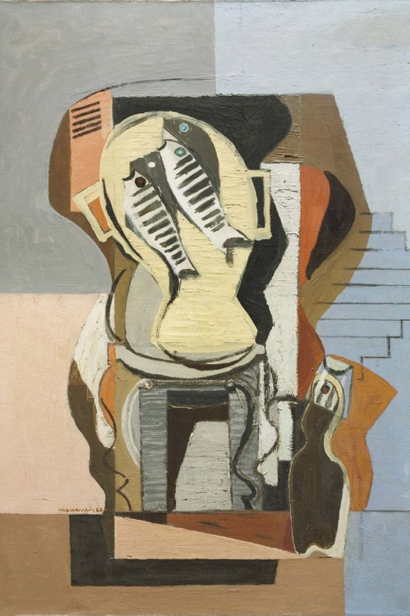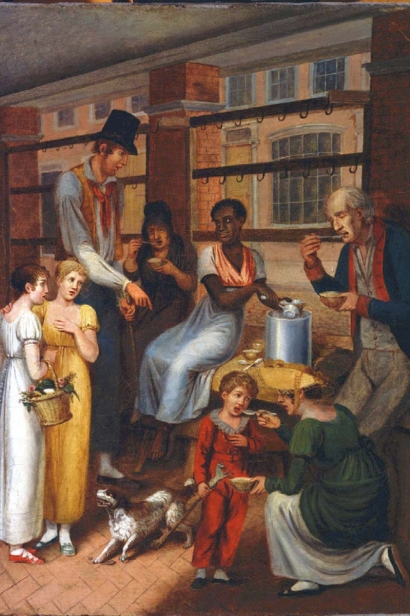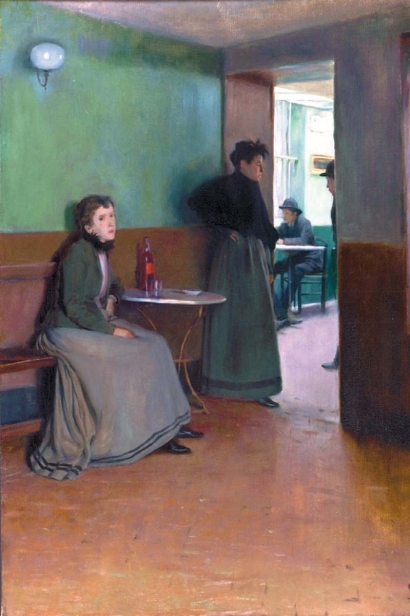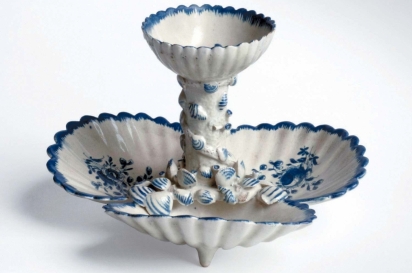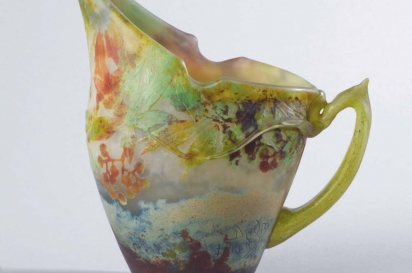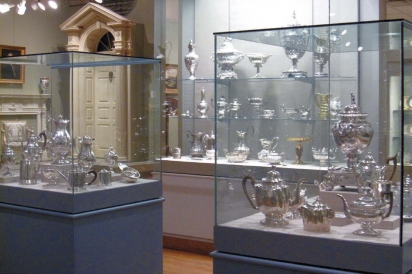A Tour of Food Art in the Philadelphia Museum of Art
When you look down the tree-lined Benjamin Franklin Parkway toward the Philadelphia Museum of Art— columned, pedimented, like a temple on a hill—food might be the furthest thing from your mind. After all, food is not permitted in the galleries. Even beyond the practical considerations, we tend to think of art as nourishment for the mind, not the body. The romantics among us might argue that art is for humanity’s higher impulses: beauty, creativity, imagination.
But among the heroic history paintings of old and the abstract experiments of our own age, the Philadelphia Museum of Art houses a rich assortment of artworks that pay homage to the act of eating. To walk among them is to reflect on philosophical and practical matters that aren’t so different from the gastronomical discourse of today.
For the purposes of brevity, this tour of food-themed art will focus on American and European art of the last two centuries. Conveniently, these are all artworks installed on the first floor of the museum, which is open on Wednesday and Friday evenings as well as regular museum hours. Even in the permanent collection, the artwork on display changes periodically, so don’t wait too long to peruse these pieces. Walk these galleries and work up an appetite.
Still Life
Artists have been memorializing sumptuous arrangements of food since the ancient Romans painted bowls of fruit on the walls of their villas. Over the centuries, still-life compositions of food have taken on different meanings, from showing off the skill of painters to showing off the luxurious appointments of their patrons. By the nineteenth century, still-life food painting was an established genre that artists could revisit and reinterpret.
In Still Life with Vegetables, James Peale is revisiting a style that might be called the golden age of still-life painting: Seventeenth-century Dutch artists painted detailed, luminous compositions of food and tableware that showed off their patrons’ wealth and alluded to religious symbolism. In nineteenth-century America, when Peale painted, a budding artist might hope to go to Europe to receive training in classic styles such as this. James Peale, however, received his artistic education in Maryland from his brother, Charles Willson Peale, before relocating to Philadelphia. James Peale’s vegetable composition skillfully deploys the sense of depth and warm golden light that characterized many golden-age still-life paintings, but his subjects are humble squashes and tomatoes that, in an era before expanding railroads and canals revolutionized food shipping, were likely grown in his family’s garden. (Today’s local-farmstand shoppers will probably recognize these squashes and nightshades as the bounty of summer in southeastern Pennsylvania.)
There is no religious imagery here; the composition seems to be an exercise of color and proficiency. Peale and his family were very interested in scientific classification; these precisely painted leaves and gourds could serve as a botanical guide for aspiring horticulturists. For another example of an American artist playing with this form, visit a nearby gallery for Chester Harding’s Still Life with Mountain Dew. (No, not the soda.) Like Peale’s still life, this composition showcases the artist’s ability to depict these three-dimensional forms realistically on the two-dimensional canvas. Harding is better known for his portraits, but here he shows off his skill with translucent and reflective surfaces. Light shines through the decanter and glass of moonshine; you can just see the outline of the apples beyond through the amber liquid, and the curve of an empty glass catches the reflection of a white canister. Decorative glassware and wine were popular subjects in the golden age of still life, too, but with the apples and homemade distillation, Harding has put a distinctly American spin on the genre.
Like Harding’s composition, Cézanne’s Still Life with a Dessert also refers back to a classic composition. Fruit and pastry are tumbled about in a cloth draped and folded for interesting textures; an ornate glass decanter and flute play with light. But Cézanne’s still life interprets the light very differently: the contrast between light and dark isn’t so defined; the details of the fruit are not so sharp. The overall composition appears to be arranged closer to the viewer, as though displayed in a shadowbox rather than on a tabletop. Perhaps most distinctively, even in a reproduction we can see the traces of where Cézanne’s brush has been; the artist’s presence is announced in heavy strokes on the back wall and the mottled surfaces of the fruits. Cézanne painted hundreds of paintings of fruits in this way; he is said to have proclaimed, “I want to astonish Paris with an apple.” The simple, accessible, familiar shapes of the fruits facilitated Cézanne’s experiments with form and color.
Just a few decades after Peale and Harding painted to show their precision and the illusion of reality, European painters were experimenting with the idea that perception is subjective and reality itself an illusion. The artist’s role was not just to skillfully record—after all, a daguerreotype or photograph could do that—but to see and interpret the world. The artist also did what a camera could not do and left his or her mark in the form of distinctive brushstrokes. These visionaries created the dreamy, luminous Impressionist paintings you see as you walk through the Rotunda and through the side galleries. Cézanne was inspired by the Impressionists’ paintings but ultimately developed his own distinctive style, with bolder colors and more tactile forms than Pierre-Auguste Renoir’s soft pastel peaches.
By the second decade of the 20th century, World War I had the world cracked wide open and rapidly changing technologies for transportation, industry, and communication had ushered in new artistic and literary styles to keep pace. The most distinctive of these was Cubism, a style of painting that simultaneously reduced its subjects to simpler geometric forms and depicted those forms from multiple perspectives, resulting in seemingly bizarre configurations of bold geometric shapes.
The recognizable, established composition of still-life painting made an ideal testing ground to deploy this groundbreaking aesthetic. In Louis Marcoussis’s Still Life with Fish, the fish and the surface of the table are painted from an overhead perspective while the legs and edge of the table are viewed from the side. Lines and blocks of color seem to spiral out from the arrangement, providing glimpses of the setting—a staircase, a window shutter—nothing so static or predictable as a background. To find the composition we are expecting to see, a spread to tempt a diner, the eye must move across the canvas in a manner that likely feels as restless or agitated as these revolutionary young artists hoped.
Pivot slowly in this gallery to see some of the other famous works of rule-breakers from the same period: The Table (1918) by Georges Braque, perhaps the most relevant Cubist painter aside from Picasso, and The Breakfast (1920) by Henri Matisse, which combines the intimacy and vivid coloration of an Impressionist painting with the bold colors and shapes of Cubists.
Scenes of Eating
Still-life arrangements can seem to imply the act of eating—someone must have poured the wine and set out those apples, inviting you to eat—but scenes of subjects sitting down to dine have their own histories and conventions. Banquet scenes were common in Western historic and religious art of past centuries, but by the nineteenth century, compositions of dining tended to take place either in the private domestic sphere of the home or in the public arena of markets and cafés.
You won’t see too many scenes of eating in the American art galleries. The celebrated slice-of-life paintings of Thomas Eakins and his students tend to focus on natural scenes of beauty or the dramas of sports and medical education; the quiet domestic portraits of wealthy American patrons were too refined to depict anything as terrestrial as a meal. But when you first walk into the galleries you might catch John Lewis Krimmel’s vivid illustration of a Philadelphia market in the nineteenth century.
Market paintings might not be common in early American art, but markets themselves were staples of city life. Before refrigeration, daily food shopping was a necessity, and in a bustling river city like Philadelphia the public market was a center for food producers, craftsmen and tradesmen, and street vendors. Krimmel, a German painter who emigrated to Philadelphia, captures the sense of color and motion of the market: The key characters adopt different poses around the central figure of the pepper-pot seller, from an excited dog to a kneeling matron. This painting is also remarkable for its range of human subjects: The pepper-pot seller appears to be a free black merchant, and her customers range from well-dressed maidens to a worker in a neckerchief.
Coffee houses and cafés had been a staple of European city life for centuries, but with the boom of industrialization and urbanization toward the end of the nineteenth century, cafés became more integral to the lives of artists and writers. For many they were havens—a place to replenish the body and soul with food and conversation, if the artist was far from home to study or hadn’t yet settled into a cozy domestic arrangement. But scenes like Rusiñol’s café interior expose the bleaker side of modern urban life. This café space is colorful, but the long empty spaces and slightly sickly greens invoke a loneliness and dissatisfaction among these young female laborers.
Objects of Use
What elevates an ordinary object into a work of art? At what point does a dinner service created for the use of a well-to-do family become an artifact worthy of a museum?
These cases display American-made silver made from the 1600s to the 21st century. Grouped together like this, they give the impression of untold luxury and riches. To look closer invites the viewer to explore how the designs and materials of these useful objects changed over time. The silver is beautiful and finely crafted in its own right, but these objects are also material traces of how people lived.
Despite the impressive array of silver, my favorite example of tableware in the American wing will take you into a small side gallery of beautifully carved furniture. Lean down to see this tiny dish, created in Philadelphia for a colonial Philadelphian family, which has only one job: to hold pickles, fruits, or nuts at the dinner table. But this dish is anything but simple: With all the shells clustered around its central stem, it has more than 70 individual components. As the label will proudly tell you, there are only seven such pieces still existing. This piece is marvelous to me because it tells so many stories: the way well-to-do colonial families dined; the pressure on American craftsmen to measure up to norms set by European ateliers; the care and foresight it must have taken to preserve this delicate piece for more than two centuries.
As you walk down the central hallway of European Art, the final gallery before you reach the Rotunda features a rotating display of decorative arts such as wallpaper, furnishings, and tableware. As of this writing, the display featured Art Nouveau-era glass and ceramics, including this jug with an extraordinarily high lip. At the turn of the 20th century, as evolving technology and labor increased the availability of mass-produced wares for the home, some ateliers experimented with highly stylized models (not unlike the Impressionist painters just a few decades before). The high-lipped jug looks whimsical and adventurous in comparison to the early American silver and ceramics: this piece is not designed to be a paragon or exemplar of a form, but to push the limits of its form in the name of beauty. This jug could still be used, perhaps, but its dreamlike, layered colors and dramatic silhouette designate it a showpiece.
If your walk takes you all the way to the end of the Modern and Contemporary Art galleries, you may find yourself in a room that makes Philadelphia the envy of art museums around the globe—and you may wonder what you are doing there, as the room is partly occupied by everyday objects like a bicycle wheel and a bottle-drying rack. These are Marcel Duchamp’s “Readymades,” manufactured objects that Duchamp bought and placed on display as art, with little alteration aside from his signature. Perhaps the most famous of these is the urinal you will see in this room: an object made for the most private and personal of human needs turned on its side and called art, a decision that has inspired as many artists as it has enraged critics. It’s funny, lewd, and irreverent—but whether it deserves to be called art is a question that has continued to rage for fully 100 years.
But the nearby Bottlerack, suspended in air above these pieces, has another great story. Bottlerack is what’s on the label: a metal construction with convenient spikes for placing empty milk bottles as they dry. Duchamp didn’t make it; the artist’s touch is evident in the signature scrawled along the bottom band and, less tangibly, in his vision of elevating ordinary objects to museum artifacts. The object on display in our museum is one of several replicas, bought and signed by the artist as his notoriety grew. But the original—purportedly bought at a Parisian department store—has been lost. It was perceived as garbage and thrown out by Duchamp’s own family.
The Art of Eating
Since we live in an age of increased awareness and conversation about where food comes from and how to eat well, it seems worthwhile to revisit some of the key questions that have driven food and art over time. In general, what makes food important or meaningful? Can the experience we have with food be said to be artistic or philosophical, not merely banal? In particular, the questions that challenge avant-garde artists like the Impressionists mirror questions that plague the food world today: What makes cuisine “haute” or not? What is the difference between a chef—or artist—and a cook?
Should you find yourself exploring the galleries of the Philadelphia Museum of Art, you may not find answers, but you’ll know that we’ve been asking versions of these questions for centuries. And good food is always better with good company.


